The rapid advancements in Generative AI (GenAI) and Agentic AI have redefined the technological landscape, enabling tools like Conversational AI (CAI) to deliver unprecedented value. CAI leverages natural language processing (NLP) to interact with users through speech or text, understanding context, intent, and continuously improving through self-learning.
With a strong demand for automation and escalating investments from hyperscalers, such as Meta, Google, and Microsoft, CAI is poised to become a $49 billion industry by 2030. Today, 75% of the Fortune 250 already use CAI in some capacity, highlighting its transformative potential.
The Evolution of Conversational AI
Conversational AI has come a long way since its inception as rule-based chatbots limited to research projects. The consumerization of technology and enterprise innovation have fueled its growth. Today, GenAI-powered CAI is capturing enterprise attention, expanding its use cases, and delivering measurable business outcomes. While GenAI makes CAI powerful, clients are now looking for solutions that can handle complex cases with high autonomy and decision-making capabilities, leading to the rise of task-focused agentic AI.
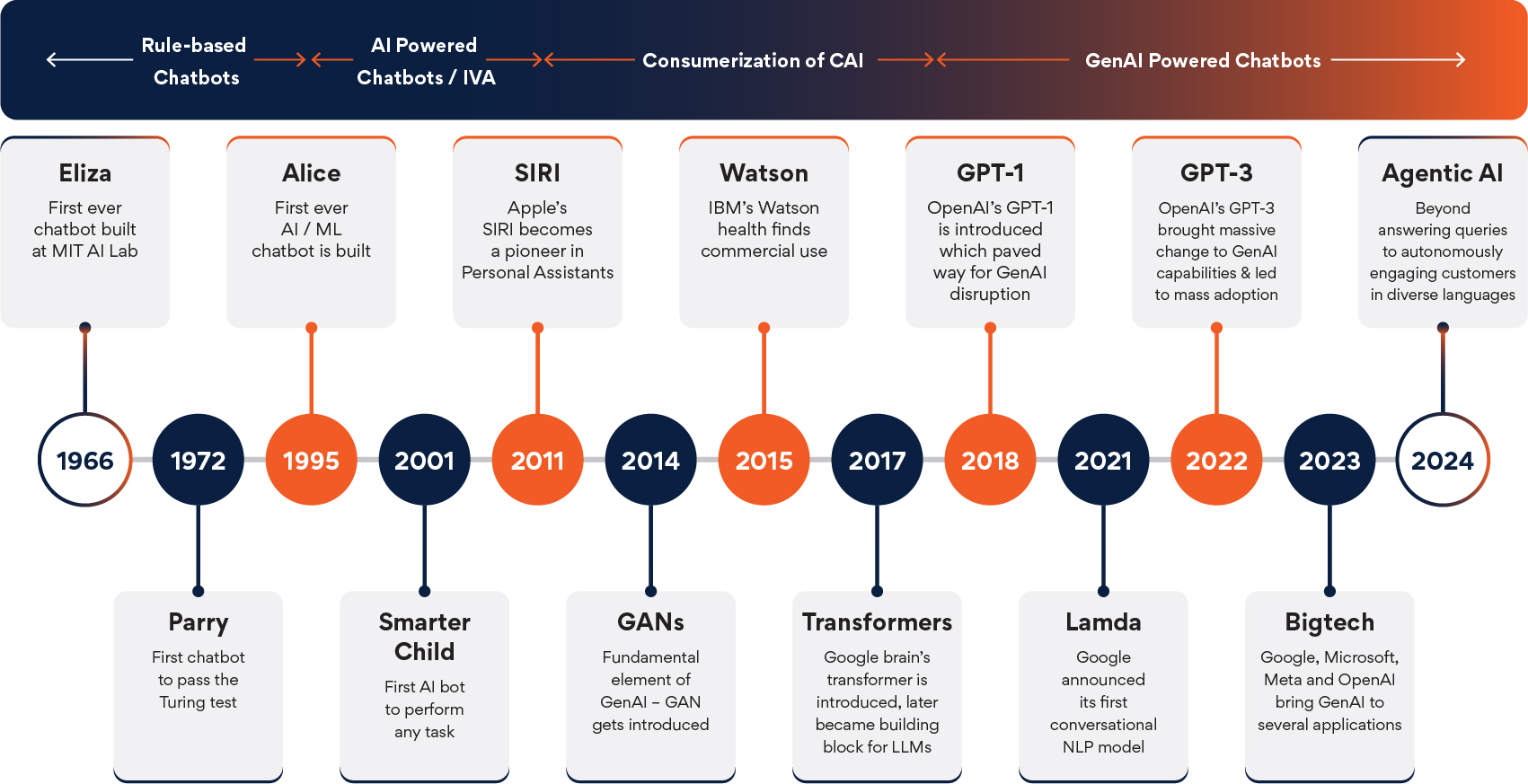
CAI Adoption Across Industries and Functions
Industries with a large user base and significant reliance on contact centers or back-office operations have been early adopters of CAI. Sectors such as banking and financial services, insurance, healthcare, telecom, travel, and retail/CPG lead the adoption, benefiting from automation and scalability.
Key Drivers of CAI Adoption across industries:
- Productivity and Scalability: As businesses grow, CAI reduces customer support costs and automates repetitive tasks, overcoming growth bottlenecks.
- Omnichannel and Live Agent Support: 24/7 availability across channels is critical, and CAI complements human agents to enhance service quality.
- Multilingual Support: CAI bridges language barriers, enabling centralized, low-cost customer support for diverse audiences.
- Seamless Integration: CAI integrates with enterprise applications, optimizing workflows and enabling users to complete tasks autonomously.
The infusion of CAI in application ecosystem can significantly reduce the go-to-market timelines and make complex and critical processes more robust. In healthcare, CAI can be used for benefits management, revenue cycle management and care team management, among others. The Agentic AI-based bots now allow the caregivers and providers to do medical history analysis and recommended diagnosis and recovery plans. In retail, CAI can take care of personalized recommendations, product campaigns, order management and warranty support. In insurance, complex and time-taking processes, such as underwriting, claims processing, policy recommendations, renewals and customer onboarding can be taken up fully by agentic CAI.
Functions in any organization that are closer to the customer or involve high frequency of standard and routine tasks have the highest propensity to gain from CAI adoption.
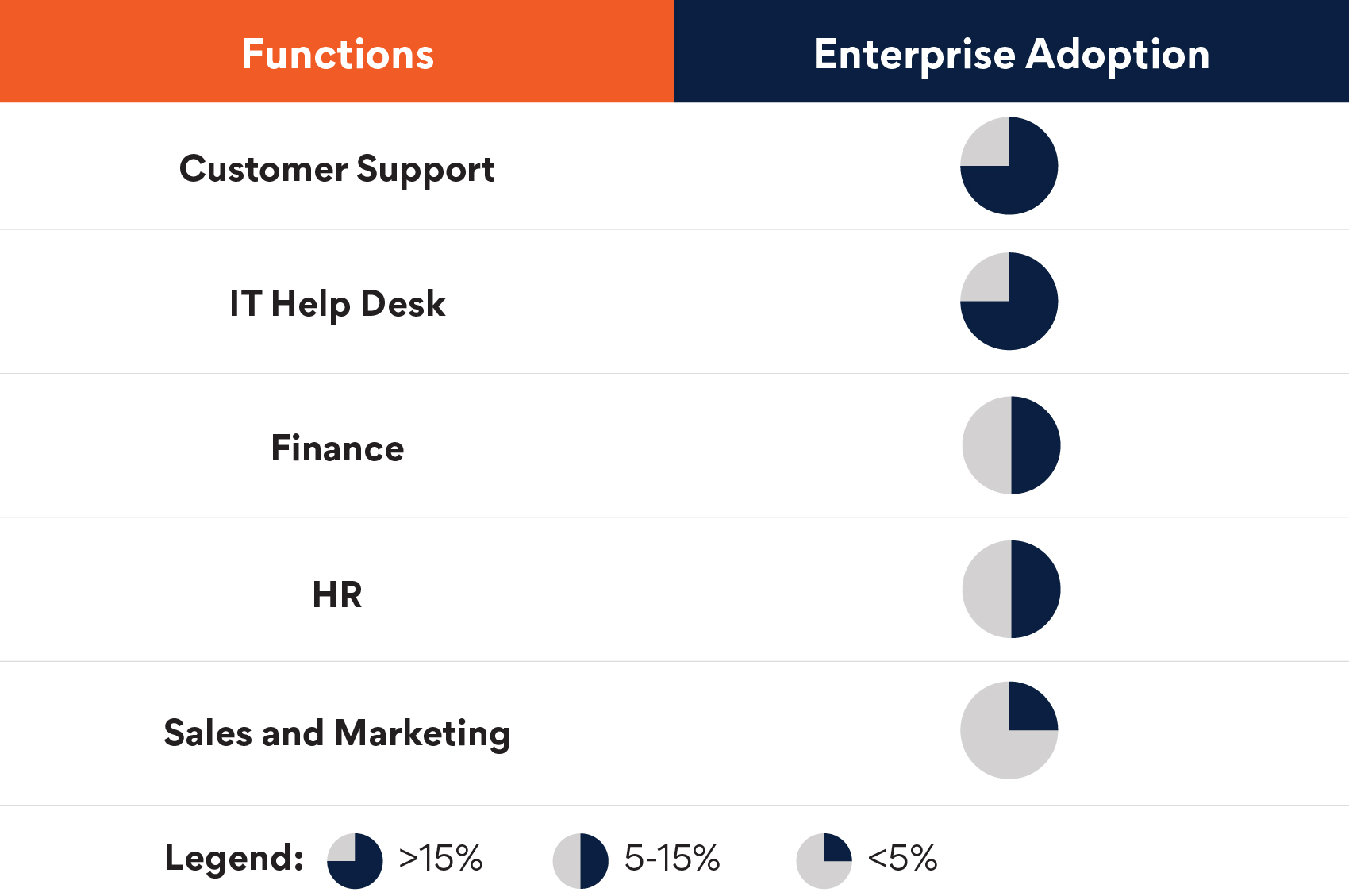
Given that CAI can add value across enterprise functions, the use cases can be broken down into two broad categories: customer use cases (or front-end use cases), and employee use cases (or back-end use cases).
CAI’s ability to automate tasks, resolve queries, and accelerate information retrieval benefits both customer-facing and internal operations. The technological capabilities of CAI allow it to handle fully or partially 95% of service interactions.
Customer Use Cases:
- Customer Support: Address FAQs, update information, and facilitate payments.
- Sales & Marketing: Run personalized campaigns, cross-sell, and upsell effectively with self-learning autonomous AI agents.
Employee Use Cases:
- IT Helpdesk: Fully automate L1 tasks like password resets and access provisioning.
- HR: Streamline onboarding, payroll, policy queries and even chart out upskilling and wellbeing plans with specific AI agents.
- Finance: Simplify invoice processing, reimbursements, and procurement.
- Customer Support: Active on call support to the contact center agents in recording information, suggesting next best actions and creating internal tickets.
- Sales & Marketing: Capability for sales representatives to fetch customer details, perform analysis and query the database for pricing discoveries.
Case in Point: Loan Servicing in Banking
As per a survey, 20% of banking customers are actively considering switching their bank for better customer services. CAI, by autonomously handling tasks like balance checks and transfers, and tackling complex workflows such as loan servicing, can improve customer satisfaction.
With its ability to integrate diverse data sources and make decisions, CAI reduces process steps and boosts productivity. For example, CAI’s robust capabilities enable a 70% reduction in employee involvement in complex tasks, empowering them to focus on high-value activities.
Loan Servicing Workflow – Automated With Conversational AI
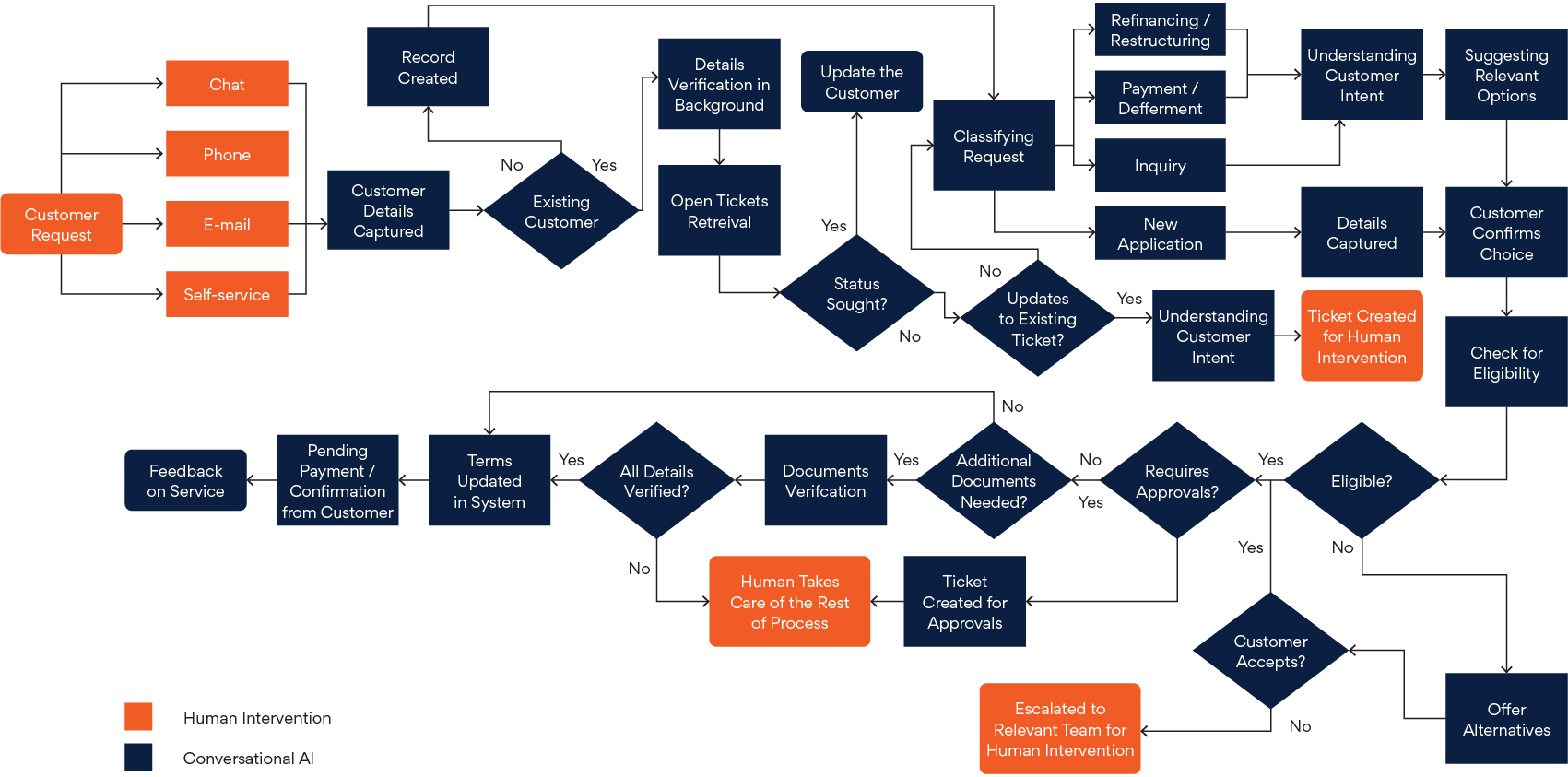
Challenges in CAI Implementation
Despite its potential, CAI implementation comes with challenges:
- Language Complexity: Scaling across multiple languages can lengthen learning cycles.
- Integration Gaps: Insufficient infrastructure or integration with legacy systems can limit effectiveness.
- Security Concerns: Clear data governance policies are essential to mitigate risks.
- Deployment: Lack of benchmarks in moving the platform from development to deployment
- User Trust: Building user confidence in CAI outputs is critical to adoption.
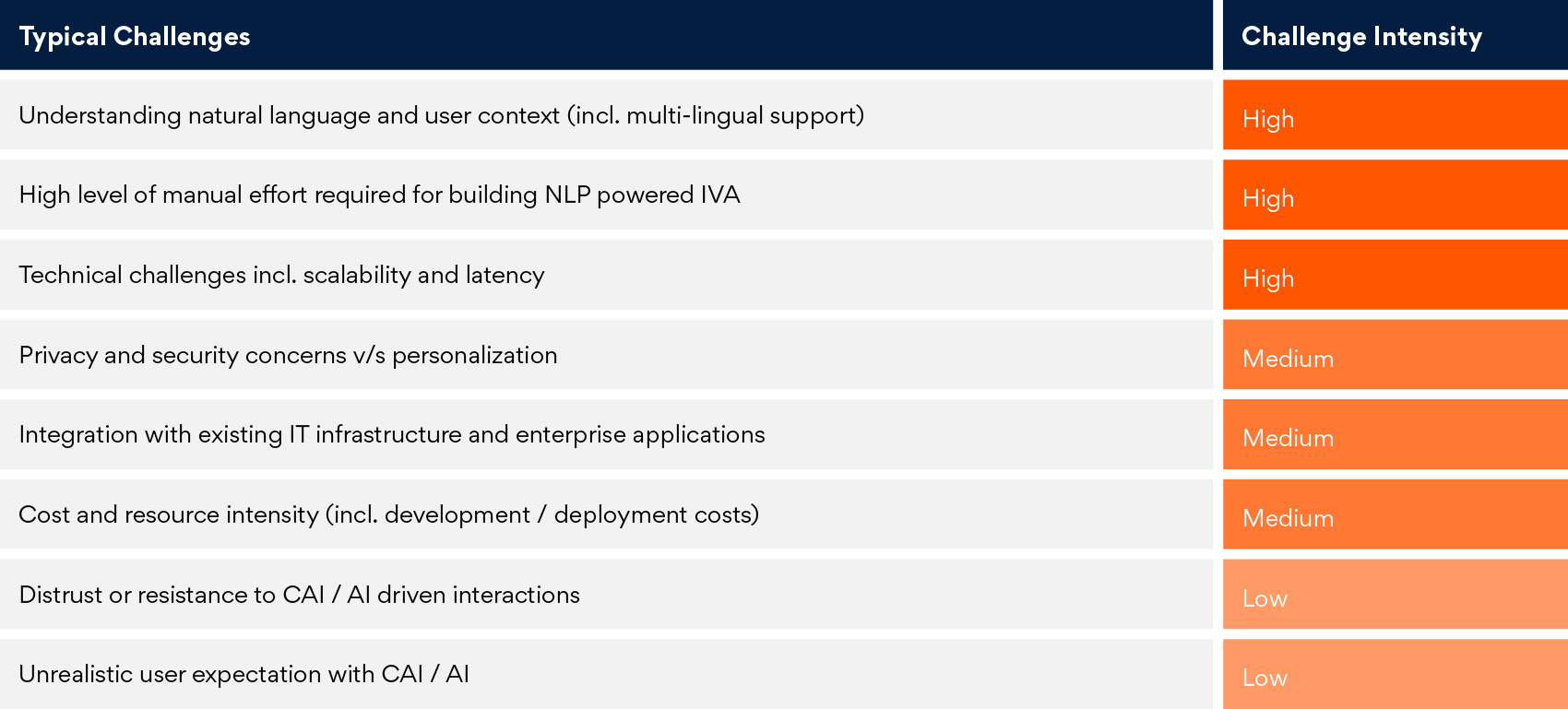
To overcome some of these challenges quickly and get more value, GenAI-powered CAI can automate several processes and can be scaled quickly to several functions.
Turbocharging CAI with GenAI
GenAI transforms CAI into a dynamic, self-learning, and highly adaptable solution. It addresses key challenges by:
- Accelerated Learning Cycles: Pre-trained LLMs enable faster scaling across languages and industries.
- Automated Course Correction: Bots adapt in real-time, ensuring continuity even during system failures.
- Enhanced Governance: Intelligent guardrails prevent misuse and provide comprehensive reporting.
- Hyper-Personalization: Responses are tailored based on user behavior and context, building trust and driving satisfaction.

The GenAI-based CAI offer several advantages over Conventional CAI
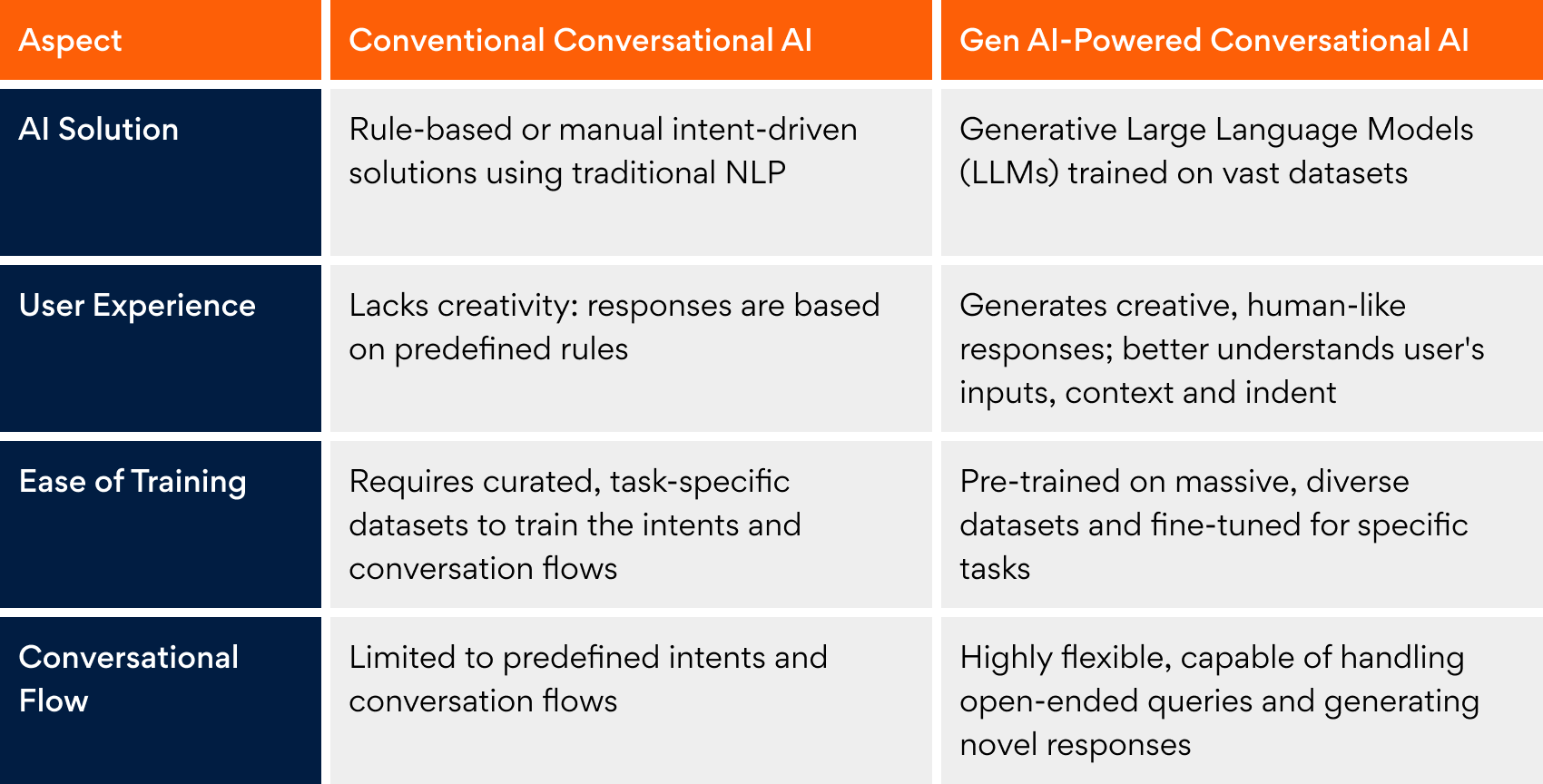
The New Frontier: Agentic Conversational AI
While GenAI has laid the ground for CAI to transform from a reactive technology to an agent-based proactive decision-making tool capable of achieving outcomes with less inputs. Agentic CAI promises more dynamic, personalized and efficient interactions to truly assist users and act on their behalf.
By understanding user intent and context more deeply, the AI agents can automate complex multi-step tasks and create new workflows to increase efficiency and productivity across business functions from verticalized core functions, such as R&D, supply chain etc., to horizontal enabling functions, such as F&A, HR and Legal.
Driving GenAI-led CAI with Persistent: Success Stories
A leading US-based manufacturer of semiconductor products wanted to automate its HR functions through integrated chatbot with genai-based solution. Persistent implemented GenAI-powered CAI with a Microsoft Teams interface and integrated it with SAP success factor, ServiceNow and Sharepoint. The solution led to 100% queries being routed through the new chatbot, with a ~30% reduction in ticket size for human intervention.
A US-based insurance provider struggled with high bot exceptions leading to high human involvement and reduction in team productivity. Persistent, through its framework approach, helped the client optimize processes from 100 to 5 for agentic implementation and is currently automating complex medical analysis through Agentic AI. It will also allow employees to talk to knowledge documents and glean real-time insights.
Another US-based mid-sized insurer in life and health products faced challenges in customer servicing due to low availability of live agents. Persistent implemented a GenAI-based CAI solution, SmartAssist, and integrated it with client applications to fully automate policy status retrieval and quote generation with the capability to seamlessly transferring calls to live agents.
A US-based home and commercial building’s security solutions provider wanted to reduce the time employees took in looking for the right documents for various purposes. Persistent worked closely with the teams to document the business and access rules and implemented them with GenAI-based SearchAssist in CAI through integration with Sharepoint.
The Future: Humans and AI Agents
As GenAI’s underlying capabilities advance, CAI will evolve into a collaborative tool between humans and AI —proactive agents capable of initiating interactions, adapting to changing contexts, and collaborating with other systems and humans.
These AI agents will work with greater autonomy to achieve specific objectives in workflows or even govern a multilateral network of interactions between technologies to personalize interactions at scale, demonstrate operational resilience, and align with ethical guidelines, redefining enterprise workflows and user experiences.
CAI, supercharged by Agentic AI, is not just a technology enabler but a strategic differentiator. Its ability to transform workflows with new use cases, enhance productivity, scalability, and customer satisfaction makes it indispensable for enterprises aiming to thrive in a digital-first world.






